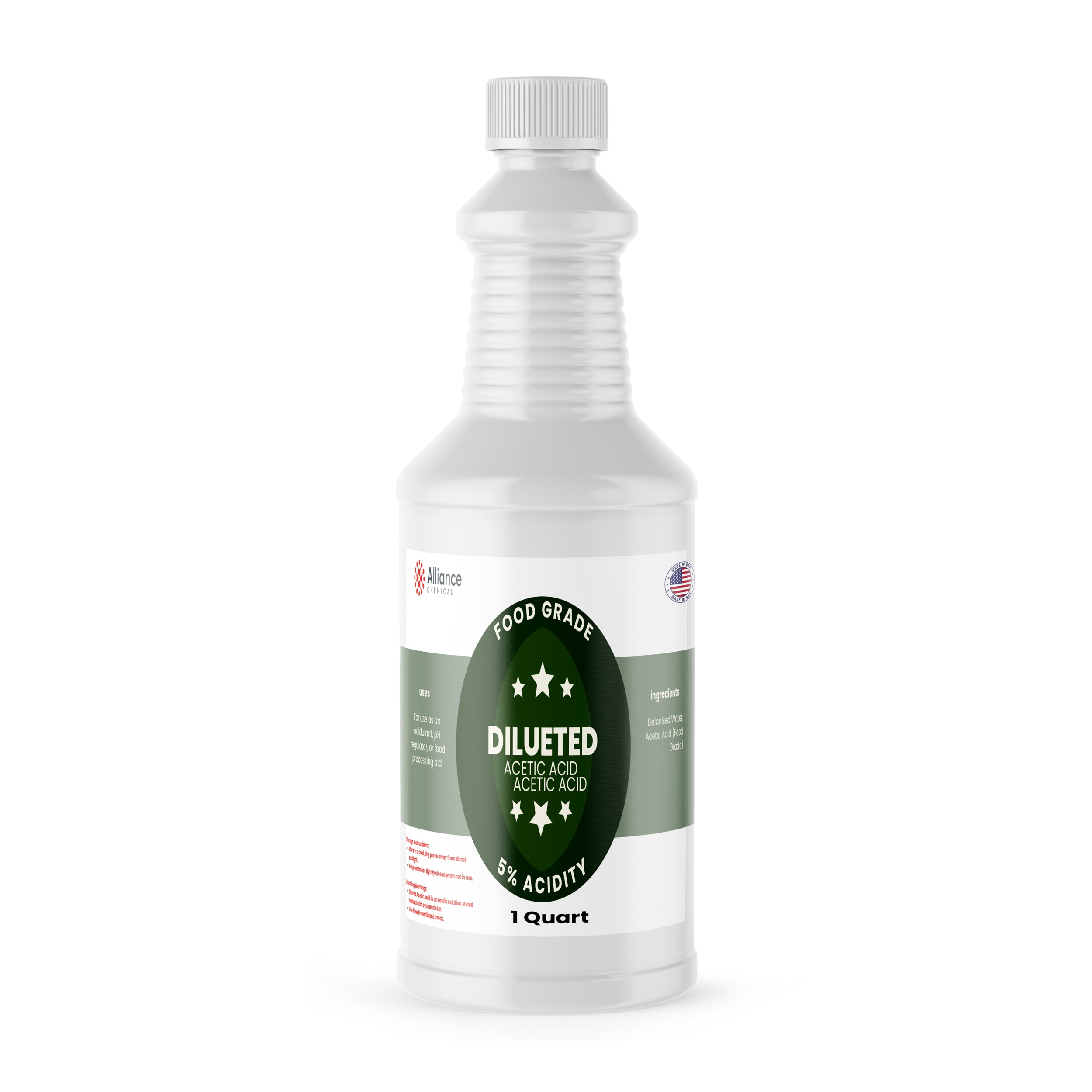Ask a question
Product Overview
5% Diluted Acetic Acid Food Grade is a high-purity, aqueous solution of ethanoic acid (CH₃COOH). Engineered to meet strict Food Grade specifications, this clear, colorless liquid provides precise acidity control for commercial food manufacturing, pickling operations, and beverage formulation. Unlike crude vinegar fermentation products, this formulated solution offers tight assay control (4.9–5.1%) and low impurity profiles, ensuring batch-to-batch consistency for industrial processors.
Commonly referred to as vinegar acid in the industry, this solution is fully water-soluble and allows for uniform distribution in brines, marinades, and liquid formulations. It functions as a reliable acidulant and buffering agent without introducing unwanted organic residues. Beyond culinary applications, it serves as a mild, effective cleaning agent for process equipment and a pH regulator in water treatment systems requiring high-purity inputs.
Key Properties
- CAS: 64-19-7
- Appearance: Clear, colorless liquid
- Concentration: 5% w/w (Assay 4.9–5.1%)
- Grade: Food Grade
- Chemical Formula: C₂H₄O₂
- Molecular Weight: 60.05 g/mol
- Specific Gravity: 1.005 – 1.01 (at 25°C)
- Density: 1.005 g/mL
- Boiling Point: ~100°C
- Odor: Characteristic pungent, vinegar-like
- Solubility: Miscible in water
- Heavy Metals (Pb): Max 0.5 ppm
Common Applications
- Food Manufacturing: Acidulant and preservative aid for pickling, sauces, and dressings.
- pH Control: Precise pH adjustment for industrial processing lines and water treatment.
- Equipment Cleaning: Mild acidic cleaner for removing mineral deposits and scaling on food-contact surfaces.
- Textile & Dyeing: Used as a mild acid in fabric processing and color setting.
- Laboratory Reagent: Standard solution for general chemical analysis and titration.
Safety Precautions
While diluted, 5% Acetic Acid should still be handled with standard industrial safety protocols. Wear appropriate Personal Protective Equipment (PPE), including chemical-resistant gloves and safety goggles, to prevent eye and skin irritation. Ensure adequate ventilation in processing areas.
Store in high-density polyethylene (HDPE) or glass containers in a cool, dry environment. Keep away from strong oxidizers and bases to prevent exothermic reactions. In the event of a spill, contain the liquid and neutralize according to facility safety data sheet (SDS) protocols before disposal.
Benefits
Regulatory Compliance – Manufactured to Food Grade standards with strict limits on heavy metals and organic impurities.
Process Consistency – Controlled 5% concentration eliminates the variability found in agricultural vinegar sources.
Scalability – Available in sizes ranging from 1 Gallon jugs to 330 Gallon totes to support pilot runs and full-scale production.
Related Products
| Property | Value |
|---|---|
| Form | Liquid |
X7G-K9T-P4M
$20.00
Unit price
Compare Products
| Price |
|---|
| SKU |
| Rating |
| Discount |
| Vendor |
| Tags |
| Weight |
| Stock |
| Short Description |

















